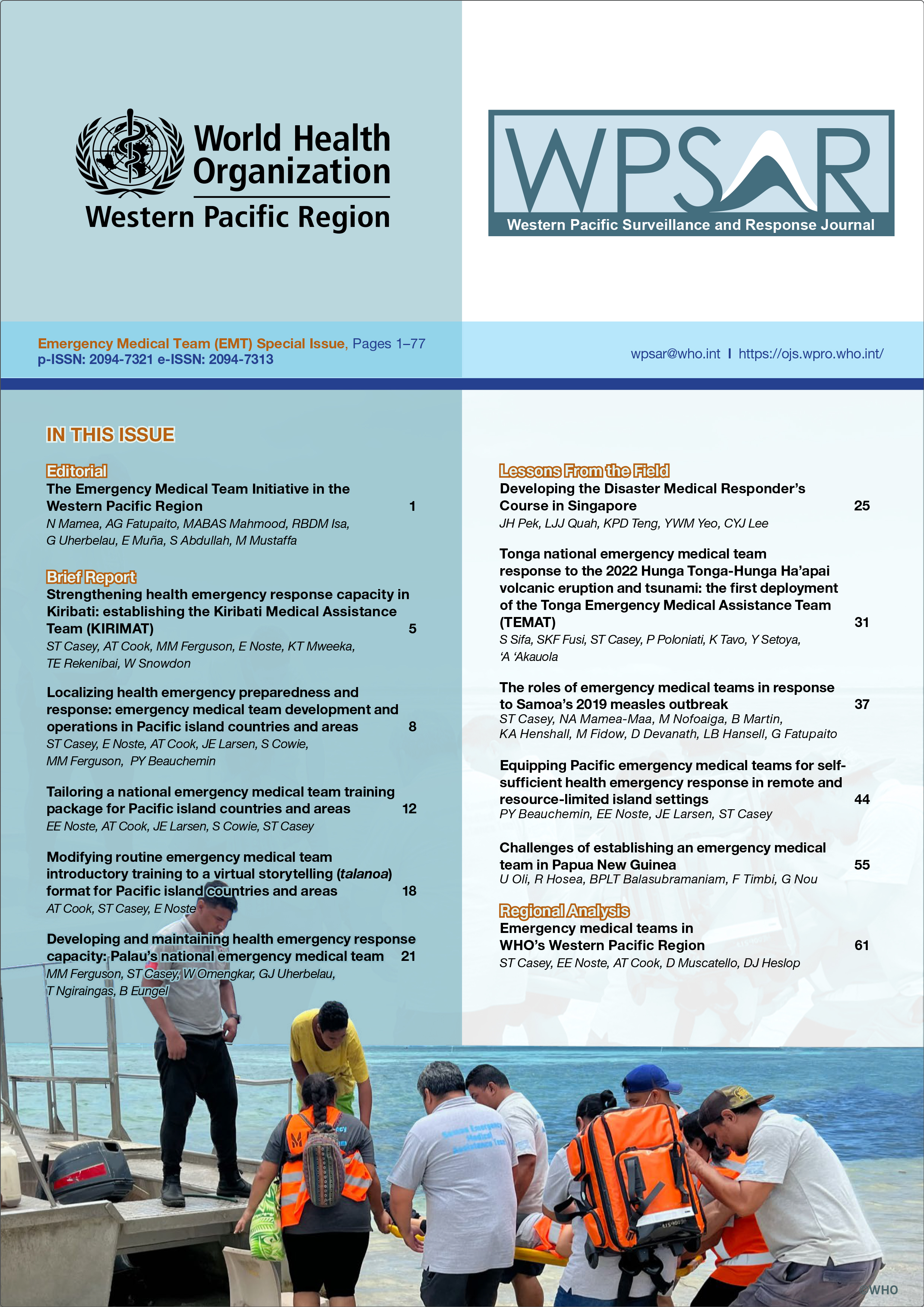The roles of emergency medical teams in response to Samoa’s 2019 measles outbreak
DOI:
https://doi.org/10.5365/wpsar.2023.14.6.1031Keywords:
measles, emergency medical team, outbreaks, SamoaAbstract
Problem: On 15 November 2019, Samoa’s Government declared a state of emergency in response to a rapidly worsening measles outbreak. The outbreak overwhelmed Samoa’s health system, necessitating international assistance, including from emergency medical teams (EMTs).
Context: Measles spread globally throughout 2019, with cases rising by more than 300% in the first quarter of 2019, as compared with 2018. Given Samoa’s low immunization coverage with a measles-containing vaccine at the time, at 40% for the first dose and 28% for the second, the country was soon overwhelmed with measles cases, hospitalizations and deaths.
Action: Following a request for international assistance, 18 EMTs from around the world deployed to Samoa, bringing more than 550 additional clinical, public health and logistics personnel to the country’s measles response. Working alongside Samoan health workers, EMTs provided critical surge assistance in clinical management, vaccination, surveillance, infection prevention and control, risk communication and community engagement, and mental health and psychosocial support.
Outcome: A total of 1867 hospitalized measles patients were treated from 30 September 2019 to 13 January 2020, with 83 measles-related deaths recorded. EMTs provided essential surge support across Samoa’s health system during the most acute phase of the response, helping to care for the ill and control the outbreak.
Discussion: Samoa’s measles response triggered a large-scale and unique EMT activation, with teams integrated into Samoa’s hospitals and health centres. The response demonstrated the critical role that EMTs can play in outbreak response and the importance of strong coordination to ensure optimal use of international clinical surge support by a health system in crisis.

